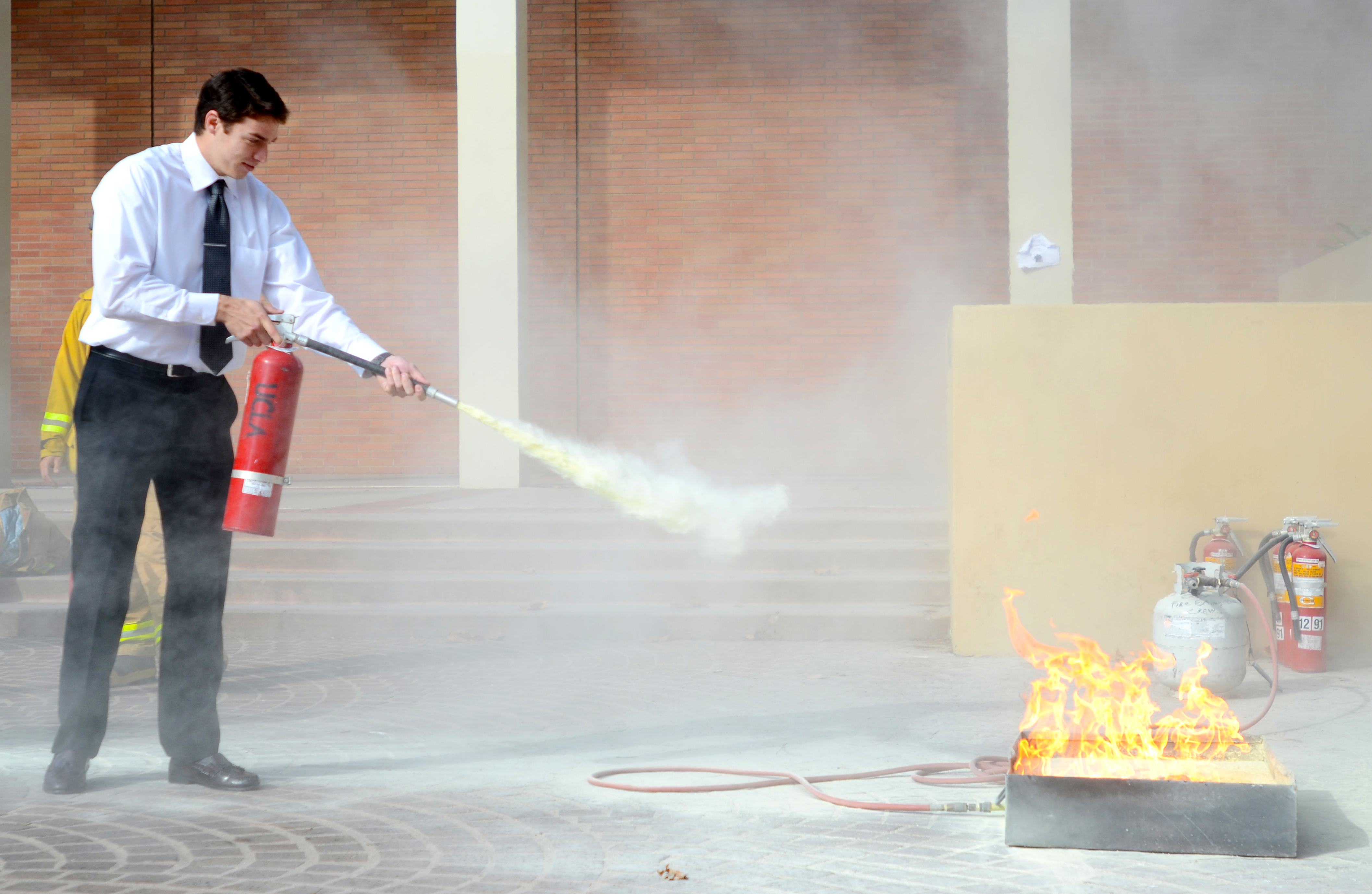
The UCLA Office of Environment, Health and Safety holds hands-on fire extinguisher training classes near the Inverted Fountain on Tuesdays and Thursdays, every other week. The training classes are required for all students or staff working in UCLA labs.
Heads turned as a small orange fire blazed by the Inverted Fountain.
“911, what is your emergency?” asked a fire jacket-clad instructor.
“I’d like to report a fire,” said a student as he took a step closer ““ red fire extinguisher in hand ““ and let out a stream of fine powder, smothering the fire within seconds.
The demonstration by the UCLA Fire Department on Tuesday was part of a hands-on fire extinguisher class that all students and staff working in a UCLA lab are required to complete.
The hour-long training typically takes place every other week and is open to any UCLA student, faculty or staff member, said Vincent Anderson, a fourth-year history student and intern for the UCLA Fire Department who teaches the class. The fire department hosts additional classes if there is high demand, Anderson said.
The time of the class, paid for by the Environment, Health and Safety Department, alternates between the morning and afternoon to better accommodate students’ schedules, he said.
“If you’re going to be working with something that burns, it’s a good idea to know how to use something that’s going to be able to put that fire out,” Anderson said.
During the training, Anderson goes over four different types of fires: combustible fires, liquid fires, electrical fires and metallic fires. He also shows participants what type of extinguisher to use depending on the type of fire.
“Not all fire extinguishers are created equal,” Anderson said to the group of about 20 participants that gathered at the edge of the Inverted Fountain.
Anderson went on to describe what to do in the event of a fire, emphasizing that a fire should be reported to the fire department immediately no matter how small.
After the lecture, Daniel Sifuentes, a deputy fire marshal for the UCLA Fire Department, used a flare to light a controlled fire in a metal box.
The participants took turns reporting the fire to Anderson, who pretended to be an emergency responder, and then used the fire extinguisher to put out the fire.
After his turn putting out the fire, fourth-year materials science and engineering student Philip Depond said he thought the class was fun and useful, even though he had heard most of the information before.
“The propane fire was pretty awesome,” Depond said, who was required to take the class because he works in an engineering lab. “It was not what I expected. I guess I was expecting something smaller.”
Michael Opene, director of publicity for CityLab at UCLA, an organization that introduces high school students to biotechnology through hands-on experience, said he found the training to be very practical and easy to remember. Opene said he was required to take the class because of his involvement with CityLab.
“I think (the training) helps a lot,” Opene said, “We’ve seen fire extinguishers since we were kids and not everyone knows how to operate them and so I thought it was a very valuable experience.”
